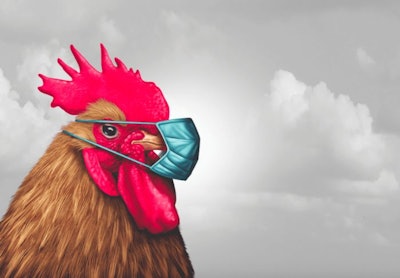
Poultry production, as part of animal production, is a changing discipline, particularly in these times of the pandemic. New energy sources are being used, artificial intelligence is being incorporated, ingredients with different characteristics are being fed, and sustainability and animal welfare are built into the backbone of production. Along with this, productivity is challenged with food safety and health issues, particularly with the use of less drugs and antibiotics in the forefront.
“The combination of physical barriers, sometimes chemical barriers, as well as time, are the best set of tools for the prevention we long for. This combination is called biosecurity,” says Carlos Garcés, professor, in the foreword of the book entitled Bioseguridad en la producción avícola (Biosecurity in Poultry Production) by Professor Antonio Callejo, Pedro Gil, Samuel Novoa and Sonia Téllez (Servet, Spain, 2020).
Callejo, professor of Animal Production at the Universidad Politécnica de Madrid, has more than 30 years of experience in poultry production topics, with wide expertise in publishing materials with educational contents. This time, this book in Spanish is destined to serve as a reference for all the Spanish-speaking world and be a contribution to “the defense of animal origin foods production.”
The recently released book starts with the principles and fundamentals of biosecurity, from basic concepts to disease dissemination and status. It follows with biosecurity planning, differentiating between hazard and risk, and including personnel training—a must. Then, the book continues in the form of strategic, structural, operational and specific biosecurity.
Each of these concepts handle detailed subjects, such as: farm localization for strategic biosecurity; facilities and equipment for structural biosecurity; personnel, feeds, animals and water control, or cleaning and disinfection for operational biosecurity; and lastly, the particularities for broilers, layers and hatcheries in specific biosecurity.
Besides being a very well-written book, with clear definitions of concepts, it contains a sufficient amount of very descriptive illustrations, tables, figures and photographs. One thing I particularly liked a lot is the fact that it has several boxes with excerpts or pull quotes, highlighting important facts in the page or section. The general layout makes it quite easy to read and follow, as well.
Although it is based on the European Union regulations, just the fact that it is in Spanish can be an exceptionally good reference for Latin American producers, veterinarians, consultants, live production managers and others. As clearly stated in the book, the EU standards can be a guidance to poultry biosecurity good practices all over the world.
What do you think?


















